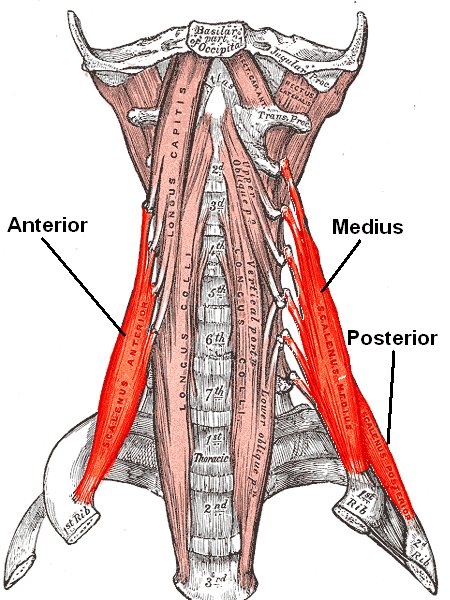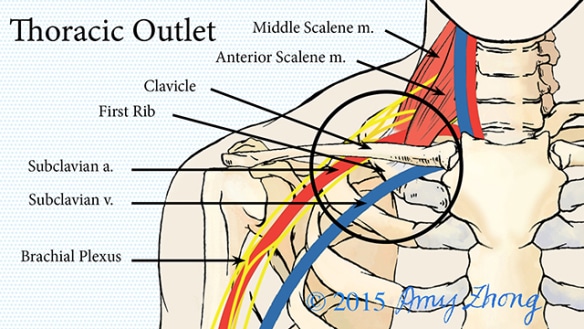Scalenectomy – Overview
Scalenectomy refers to the surgical removal of the scalene muscle. The scalene muscles are a group of three pairs of muscles in the lateral neck. They include the anterior scalene, middle scalene and posterior scalene.

Scalene Muscles
The anterior and middle scalene muscles help to lift the first rib and tilt the neck to its side while the posterior scalene helps to lift the second rib and tilts the neck to its side.
Indications for Scalenectomy
Scalenectomy may be medically approved as the best course of action in different situations. There may be a need for removal of anterior scalene muscle during treatment of thoracic outlet syndrome.

scalenectomy
A thoracic outlet syndrome is a group of disorders that occur when certain blood vessels or nerves are compressed.
It affects the space between the collarbone and the first rib (thoracic outlet). The excess pressure due to the compression may be reduced by a number of surgical techniques that will include scalenectomy.
The two types of Thoracic Outlet Syndrom that indicate Scalenectomy include:
Neurogenic TOS – This is the most common type and occurs when the nerves in the brachial plexus are compressed, usually between the first rib and the scalene muscles. Most patients have pain, weakness, numbness, or tingling in the neck, shoulder, and arm.
These symptoms usually worsen when the thoracic outlet is narrowed in certain body positions, such as when the arm is raised overhead.
Many patients with neurogenic TOS have abnormal anatomy in the thoracic outlet (for example, an extra rib called a cervical rib) and a history of neck trauma (for example, a car accident or repetitive movements while playing sports or working).
Other patients have no clear cause, but their symptoms are concerning for TOS.
Venous TOS – This is rare and occurs when the subclavian vein is compressed, usually between the first rib and clavicle (or collarbone), causing a blood clot. It is also called “effort thrombosis” and Paget-Schroetter disease.
Many patients suddenly develop a swollen and discolored arm, and immediate treatment is critical. Patients usually require catheter-directed thrombolysis, anticoagulation, and then surgery to decompress the thoracic outlet.
A First rib resection is a surgical procedure used in humans to treat thoracic outlet syndrome (TOS). It is often accompanied by removal of the nearby anterior scalene muscle.
It involves the surgical removal of a segment of the first rib, which is the rib closest to the head, under the collar bone.
Scalenectomy Risks and Complications
As with any surgical procedure, there are risks associated with scalenectomy. General risks associated with any type of surgery such as anesthetic risk, bleeding, infection, wound healing problems and unfavorable scars are all still possible.
Scelenectomy Recovery
This surgery takes about two hours to complete and requires a one- to three-day stay in the hospital. Recovery can take several weeks, during which your doctor may recommend restricting activities.
Read More: Rib Removal Surgery


